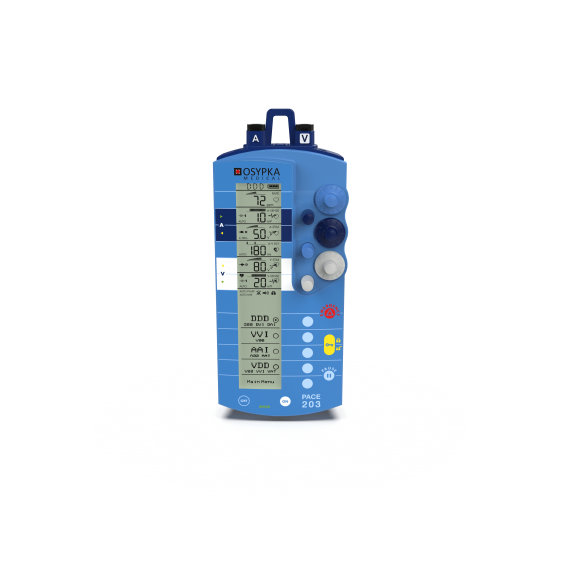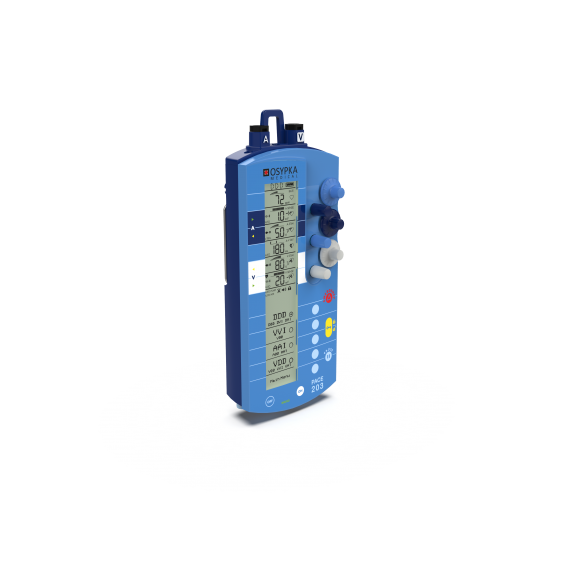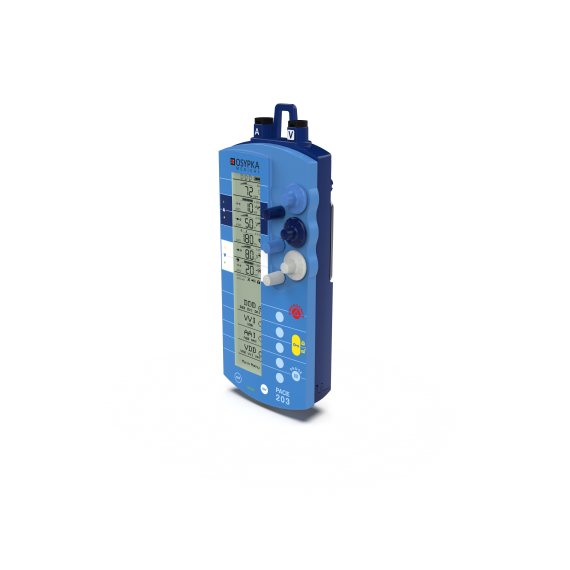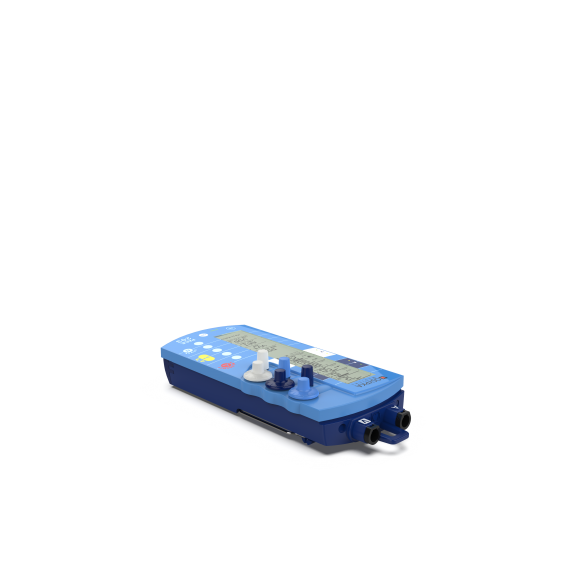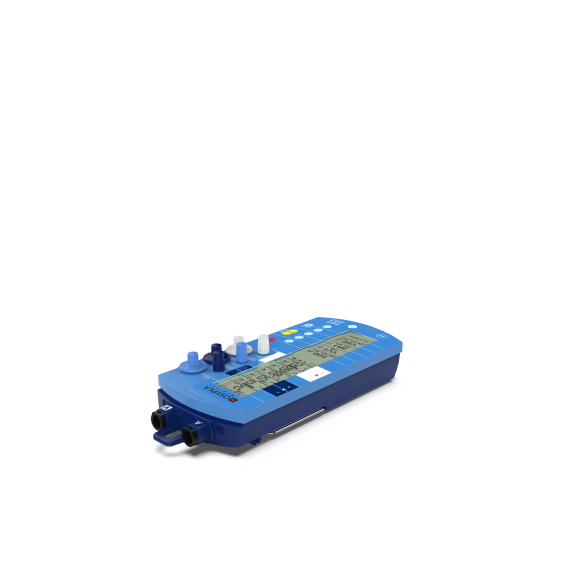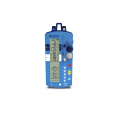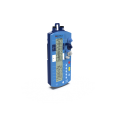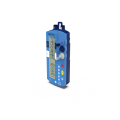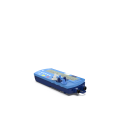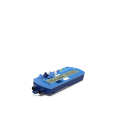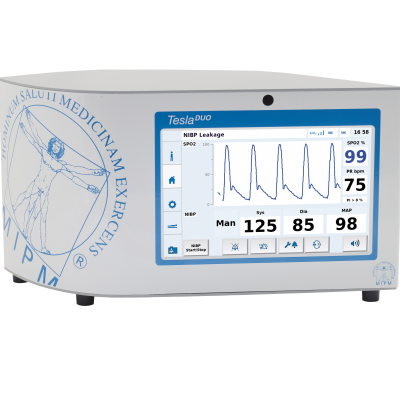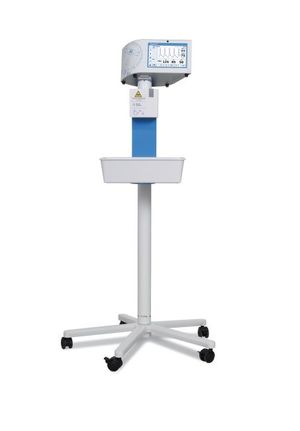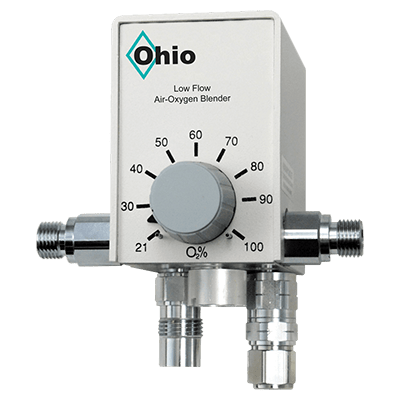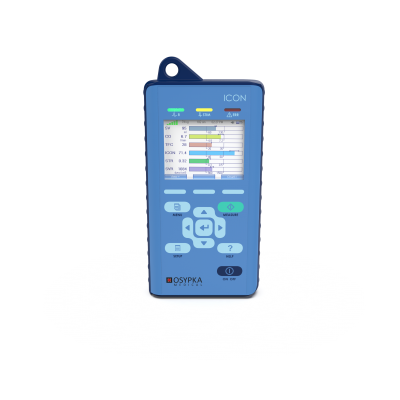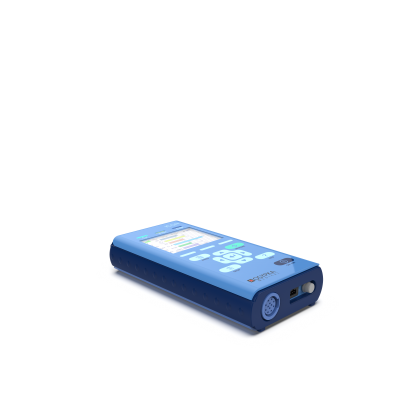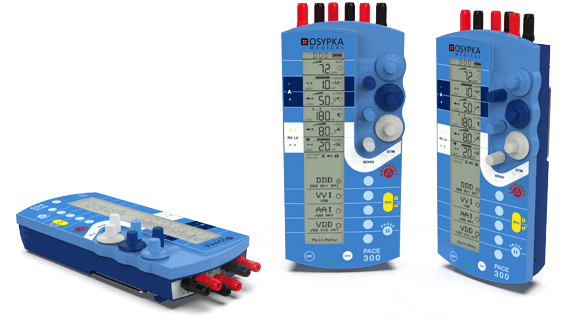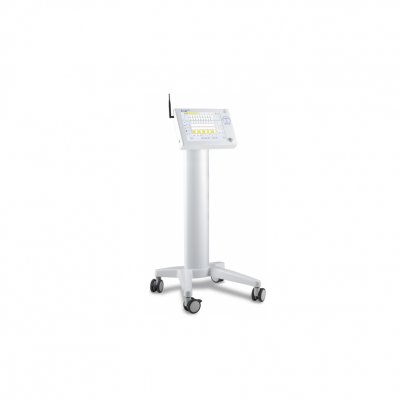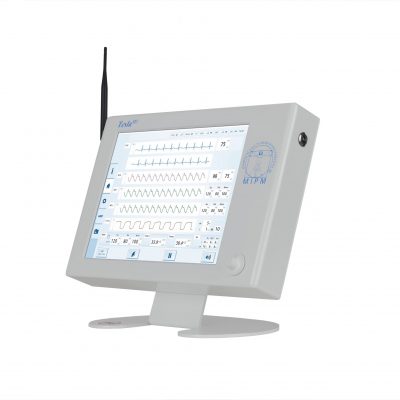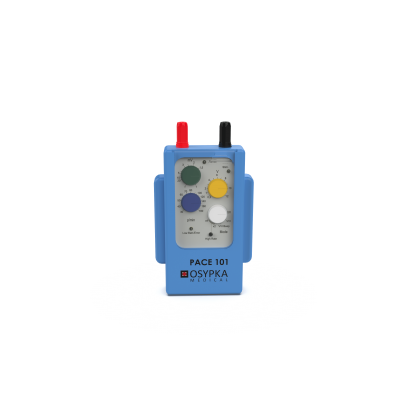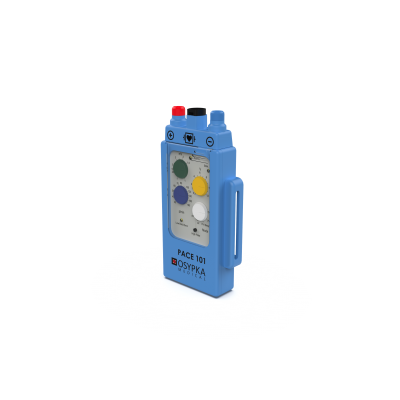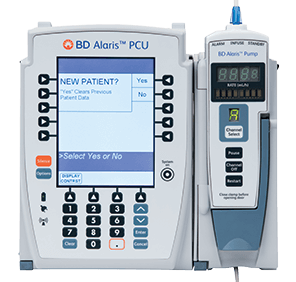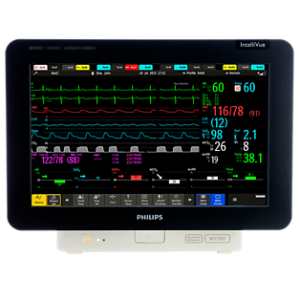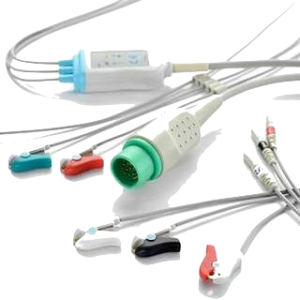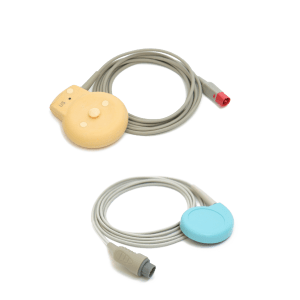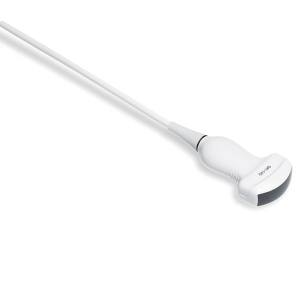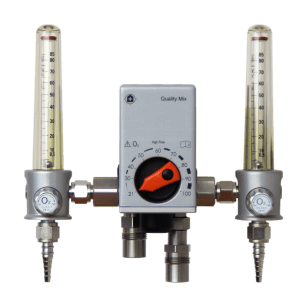Dual Chamber External Pacemaker
Specialties:
- Impedance function for optimal placement of pacing leads
- Autosense function, automatic adjustment of atrial and ventricular sensitivities
- Pause function, measures automatically intrinsic heart activity variables
- Statistics, for evaluation of patients` pacing dependency
- Rapid atrial pacing up to 1000 ppm for managing atrial tachyarrhythmias and ventricular high rate up to 220 ppm
- Fast access to dual and single chamber pacing modes:
DDD (RV, LV), VVI (RV, LV), AAI, VDD (RV, LV), D00 (RV, LV), V00 (RV, LV), A00, DVI (RV, LV), DAI (RV, LV), VAT (RV, LV), AAT, DDD+AT (RV, LV), DAT (RV, LV), DDI (RV, LV)
The advanced technology and features of PACE® Model 203 make it the ideal choice for dual chamber temporary pacing in the cardiac OR and ICU. PACE® Model 203 dual chamber (DDD) temporary cardiac pacemaker is designed to be used with cardiac pacing lead systems for temporary atrial or ventricular or A-V sequential pacing. PACE®Model 203 has applications where such pacing modes are indicated for therapeutic or prophylactic purposes.
Description
PACE® Model 203 is quintessence of more than 35 years expertise in designing temporary cardiac pacemakers.
We learned from the best – our customers – when thinking of, and implementing, several features, having in mind that simplifying the operation increases safety and efficacy in pacing therapy as well as the comfort level of the user.
PACE® Model 203 helps in assessing the quality of a stimulation circuit, or trouble-shoot if needed:
- Monitoring of impedance is an objective measure of the electrical properties of the stimulation circuit, i.e., extension cables, pacing leads and heart tissue.
- Reasonable low capture threshold is indicative of good contact between pacing leads and heart tissue.
- Reasonable high P/R Wave amplitude is indicative of good location of pacing lead.
Very low impedance, caused, for instance, by unipolar pacing wires featuring long, exposed surface areas or placed in proximity, may exceed the specified load range of the pacemaker (all pacemakers, no matter which brand, are specified for a load between 200 Ohms and at least 1,000 Ohms).
The measured value for impedance is displayed any time the atrial or ventricular dial for the stimulation output is turned (even when device is locked!).
With the quality of the stimulation circuit assured by a proper impedance, the following challenges in temporary pacing remain, for each pacemaker channel:
- Determination of the capture threshold (a property of the patient’s heart) – ensuring effective stimulation (depolarization) by applying a stimulation output 2-3 times the capture threshold.
- Determination of the proper sensing threshold (a property of the stimulation system) – ensuring that P and R wave amplitudes are sensed properly by choosing a sensing threshold set to 1/2 to 1/3 of the P/R wave amplitude.
The capture threshold is relatively easy determined with the help of an ECG monitor – and consideration of the AV interval in dual chamber pacing applications.
More “tricky” is the measurement of P Wave and R Wave amplitudes in dual chamber pacing modes. Here is where a unique feature of PACE® Model 203 comes into play: Upon pressing the PAUSE key (which temporarily interrupts pacing therapy), PACE® Model 203 measures continuously P Wave and R Wave amplitudes! Now you just have to check, and possibly adjust for, if the sensing thresholds for the atrial and ventricular channels are set to about 1/2 … 1/3 of the P Wave and R Wave amplitudes, respectively. Super convenient!
Or better, activate AutoSense, a technology adapted from implantable pacemakers, to have PACE® Model 203 automatically set and – over time – adapt the sensitivity according to the actual measured sensing tresholds.
Intended Applications:
- Sick Sinus Syndrome
- Bradycardia with congestive heart failure
- Complete heart block
- Acute myocardial infarction complicated by heart block
- Sinus bradycardia
- Cardiac arrest with ventricular asystole
- Atrial and/or ventricular ectopic arrhythmia
- Postoperatively after cardiac surgery
- Temporary application during implantation or exchange of permanent pacemaker
